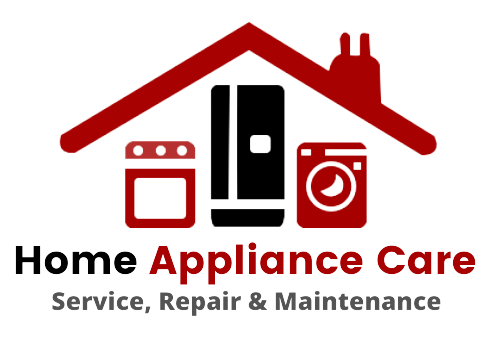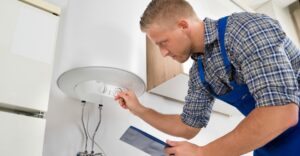Understanding and Troubleshooting the “4E” Error in Washing Machine
In the realm of household appliances, washing machines are indispensable tools that simplify the chore of laundry. However, like any other electronic device, washing machines are susceptible to errors and malfunctions. One such error code that users may encounter is the “4E” error, which indicates a problem related to water supply or water intake. Understanding the underlying causes of the “4E” error and learning how to effectively troubleshoot and resolve it is crucial for maintaining the optimal performance of the washing machine. In this comprehensive guide, we will delve into the various factors contributing to the “4E” error and provide step-by-step instructions for troubleshooting and resolving the issue.
Understanding the “4E” Error: Causes and Symptoms
The “4E” error code, commonly seen in washing machines, including models from Samsung, LG, and other brands, typically denotes issues with water supply or intake. This error can manifest due to several underlying causes, each with its own set of symptoms. Below are the primary causes and symptoms associated with the “4E” error:
1. Water Supply Issues:
- Insufficient Water Flow: Inadequate water flow or pressure from the water source is a common trigger for the “4E” error. This can occur due to partially closed water supply valves, clogged filters, or kinks in the water inlet hose.
- Symptoms: Users may observe a decrease in water flow during the wash cycle, prolonged filling times, or the washing machine failing to fill with water altogether.
2. Clogged Filters:
- Accumulation of Debris: Over time, inlet filters in washing machines can become clogged with debris, sediment, or mineral deposits, hindering water flow.
- Symptoms: Reduced water flow during the wash cycle, irregular water intake by the washing machine, or error messages indicating a problem with water supply.
3. Water Inlet Valve Issues:
- Malfunctioning Valve: A faulty water inlet valve can disrupt the proper regulation of water intake into the washing machine, leading to errors like “4E.”
- Symptoms: The valve may fail to open or close properly, resulting in inadequate water supply or irregular filling of the washing machine.
4. Water Pressure Fluctuations:
- Inconsistent Water Pressure: Fluctuations in water pressure within the household plumbing system can contribute to the occurrence of the “4E” error.
- Symptoms: Users may notice variations in water flow or pressure during different wash cycles, sudden drops in water pressure, or error messages indicating a problem with water intake.
5. Drainage Issues:
- Improper Drainage: While less common, drainage problems can sometimes lead to the “4E” error. Improper drainage after a wash cycle can hinder the washing machine from receiving a fresh water supply.
- Symptoms: Water buildup in the washing machine, slow drainage, or error messages indicating a problem with water intake or drainage.
6. Electronic Control Board Problems:
- Malfunctioning Control Board: In rare cases, malfunctions in the electronic control board can disrupt communication with other components, triggering error codes like “4E.”
- Symptoms: Intermittent errors, unusual behavior in the washing machine’s operation, or error messages indicating a problem with water supply or intake.
7. Sensor Malfunction:
- Faulty Sensors: Sensors responsible for detecting water levels or flow may sometimes malfunction, leading to inaccurate readings and error codes.
- Symptoms: Inaccurate water level readings, erratic behavior during the wash cycle, or error messages indicating a problem with water intake or flow.
Troubleshooting the “4E” Error: Step-by-Step Guide

Effectively troubleshooting and resolving the “4E” error in washing machines requires a systematic approach and identification of the underlying cause. Here’s a comprehensive guide outlining step-by-step troubleshooting procedures:
1. Check Water Supply:
- Inspect Water Inlet Hose: Examine the water inlet hose for any kinks, twists, or damage that may obstruct water flow. Ensure the hose is properly connected to both the washing machine and the water supply valve.
- Verify Water Supply Valve: Check the water supply valve to ensure it is fully open. Partially closed valves can limit water flow, leading to errors like “4E.”
2. Clean Filters:
- Locate Inlet Filters: Refer to the washing machine’s manual to locate the inlet filters. These filters are typically located at the connection point of the water inlet hose.
- Remove and Clean Filters: Carefully remove the inlet filters and clean them thoroughly to remove any debris or sediment buildup. Rinse the filters with water and ensure they are completely free from obstructions before reinstalling them.
3. Inspect Water Inlet Valve:
- Check Valve Functionality: Verify the functionality of the water inlet valve by manually testing it. Ensure the valve opens and closes properly without any signs of sticking or resistance.
- Replace Malfunctioning Valve: If the water inlet valve is found to be defective or malfunctioning, consider replacing it with a new one to resolve the issue.
4. Stabilize Water Pressure:
- Install Pressure Regulator: Consider installing a water pressure regulator to stabilize water pressure within the household plumbing system. This can help prevent fluctuations that may trigger error codes like “4E.”
- Address Plumbing Issues: If fluctuations in water pressure persist, address any underlying plumbing issues contributing to the problem. This may involve repairing leaks, replacing old pipes, or adjusting pressure settings.
5. Ensure Proper Drainage:
- Check Drainage System: Inspect the washing machine’s drainage system, including the drain hose and pump, for any obstructions or blockages.
- Clean Drainage Components: Remove any debris, lint, or foreign objects obstructing the drain hose or pump. Ensure proper drainage after each wash cycle to prevent water buildup.
6. Professional Diagnosis:
- Consult Qualified Technician: If the “4E” error persists despite troubleshooting efforts, consider seeking assistance from a qualified technician or authorized service center.
- Diagnostic Testing: A technician can perform diagnostic testing to identify underlying issues, such as electronic control board malfunctions or sensor failures, that may require professional repair or replacement.






